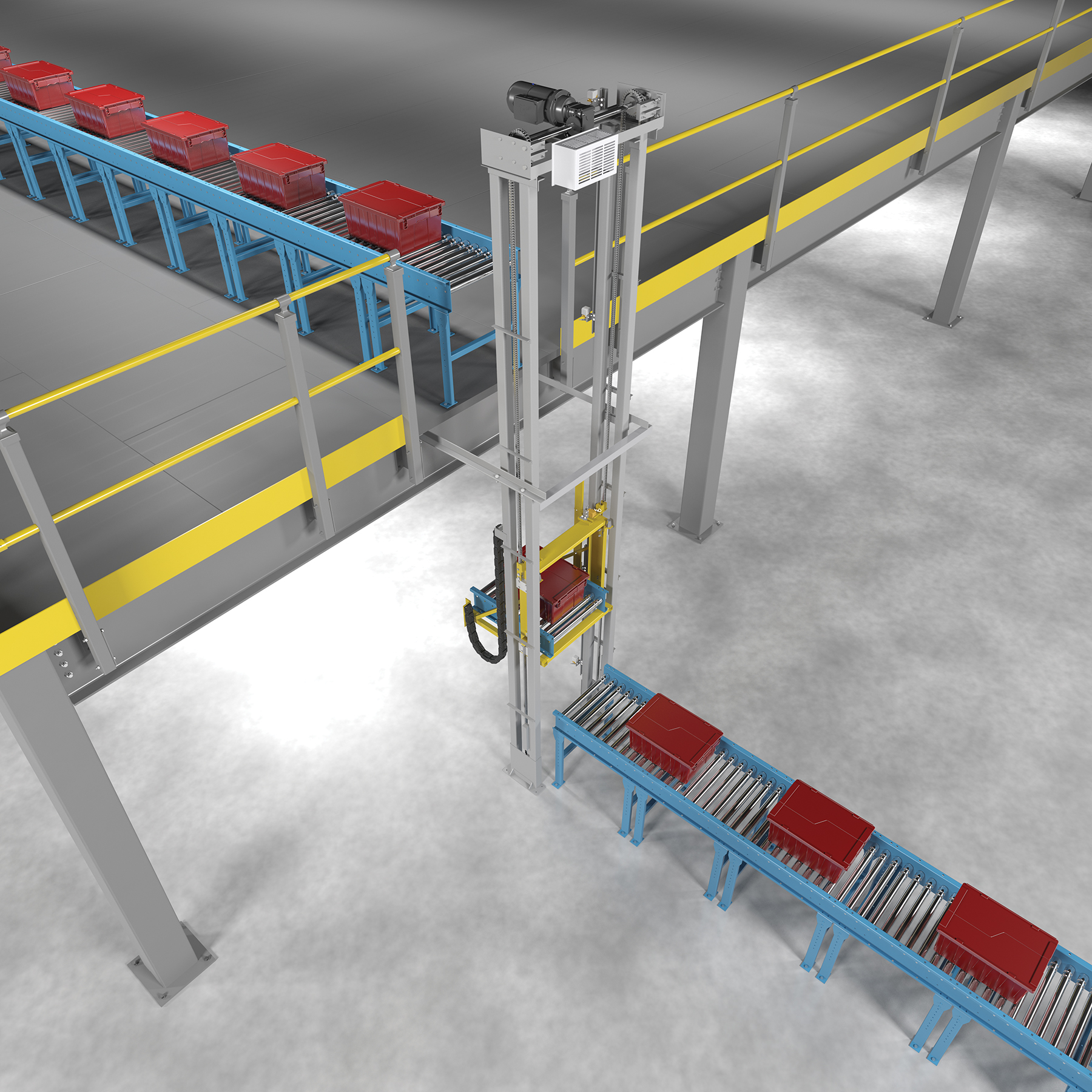Conveyor rollers help make lighter work of moving pieces about with nominal energy being applied, and thanks to the motor unit driven options, they require a lesser amount of manpower as well. From wheels, belts and internal rollers you can find a great deal of rollers found on the modern market place, regardless of whether you select a motor unit or physically powered system.
Rollers are often employed to move large products, and there are various different types of rollers for particular jobs. Rollers and other conveyors can easily elevate materials, use vibratory movements to safely move materials, and hang from above. Other popular types include screw conveyors, chute conveyors and tow conveyors.
Lets take a closer look at some of the main types of conveyor.
Conveyor Rollers
These are handling techniques designed to use rollers mounted in frames to manoeuvre products. The factors you should think of are often the weight total capacity and circumference, combined with conveyor width and length. Roller conveyors tend to be used within handling zones for example loading docks, baggage handling or construction lines. Rollers use gravitational forces or manual power to move goods around and can be straight or curved conditional upon space or operating environment.
Powered roller conveyors use powered rollers installed in frames to move merchandise and merchandise about. The top thing to consider is the type of drive that you need. The popular drive models include belts, chains and motors. Powered roller conveyors have several uses, including food handling, packaging and many other assembly line business sectors.
Wheel conveyors use unpowered wheels to transport products, either by gravity or manual power. If getting a wheel system, you might want to think about load capacity, the physical measurements and the electrical power requirements. Wheel conveyors are typically used in loading and unloading commercial transport, as well as shifting enormous large products such as pallets. Depending on the weight requirements, wheel numbers and spacing may vary.
Vibrating conveyors use rotary or linear vibration to transport commodities or items along. They are commonly used to move bulk materials like gravel and coal. Depending on the required use, many sizes are available.
Overhead conveyors are installed to ceilings and make use of trolleys moved by chains, cabling or other connections. They are mostly present in business sectors where the products really needs to be hung, for example parts handling systems, or for a/c functions. Depending on the planned use of the overhead platform, the load carrying potential is quite critical. The majority of approaches are motorised although you can find those which are hand operated.
Belt conveyors use continuous belts to manoeuvre product. There’re frequently used in food solutions, for baggage handling, in product packaging and in the mailing service, while you would typically associate them with the cash registers in shops. Belt conveyors usually are motorised and function at a variety of speeds. Belts can be driven flat or even at slope inclines.
Beltless magnetic conveyors utilise moving magnets beneath stationery plates to transfer magnetic or ferrous content. This could be comprising scrap steel or equipment parts. Beltless magnetic conveyors can be flat, upright or a combination of each.
Uses Of Conveyor Roller Technology
Your options of conveyor system will depend on the merchandise model, velocity, height and segment focus particular for your business. Certain styles of conveyor, including belts and vibrating units, work extremely well over long distances in markets such as mining and raw materials. At the same time, a vibrating belt system could be of little use in food production or technology industries.
Conveyors can be manually operated, which is when products are moved along manually on the rollers or wheels. Others are air powered or engine powered. Often, however, they are driven by electrical motors. This either happens directly or through reduction gears, chains and sprockets.
Materials and things are commonly moved on the top surfaces of conveyors, however overhead conveyors are definitely the most obvious exception.
Roller Supply
If you’re looking to move items quite easily with minimal effort and the highest possible personal safety, you might want to review your needs and requirements really carefully. Your later conclusion will be reliant on the marketplace in which you work, a choice of power source (or not) and the spending budget which you have.
Conveyor rollers might be the simplest and versatile system and also one of the most economical. Roller systems are also user friendly and maintain and can be adapted to a assortment of sectors and uses. Solutions can be custom-designed to for your available space and rollers can be selected by materials, load capacity, velocity and more. This is why conveyor rollers are one of the most popular choices for UK businesses.
Roller conveyor solutions can be custom-designed from modular components. These include straight sections, contours, transitions, merges, partitioning and a lot more. Suppliers will supply design knowledge and set up support, helping you to get the absolute best platform for your requirement. They can also offer on-going routine maintenance support and spare parts keeping your articles and your company moving.
If it’s time you developed your company and you are planning to simplify production, storage, distribution or more, then a conveyor roller system may possibly be just the thing you’ve been looking for.
Click here for more information www.conveyorrollers.co.uk

